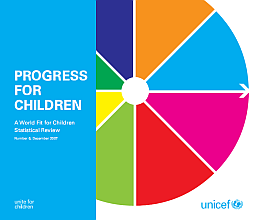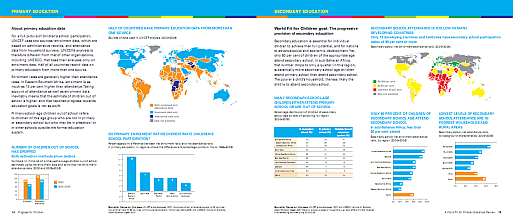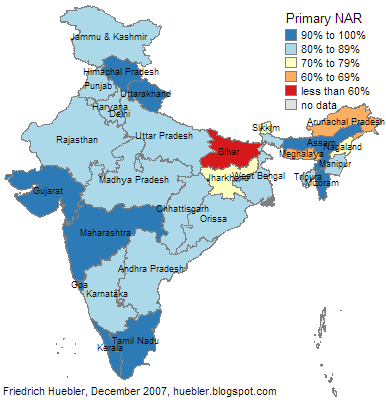 On 10 December 2007, UNICEF launched a new publication, Progress for Children: A World Fit for Children Statistical Review. With more than 60 pages of graphs and tables, the report draws a detailed statistical picture of the current state of the world's children. The publication is divided into sections organized by Millennium Development Goal.
On 10 December 2007, UNICEF launched a new publication, Progress for Children: A World Fit for Children Statistical Review. With more than 60 pages of graphs and tables, the report draws a detailed statistical picture of the current state of the world's children. The publication is divided into sections organized by Millennium Development Goal.- MDG 1: Eradicate extreme poverty and hunger
- MDG 2: Achieve universal primary education
- MDG 3: Promote gender equality and empower women
- MDG 4: Reduce child mortality
- MDG 5: Improve maternal health
- MDG 6: Combat HIV and AIDS, malaria and other diseases
- MDG 7: Ensure environmental sustainability
Some findings of the report in the area of education are:
- The number of children out of school has fallen from 115 million in 2002 to 93 million in 2005-2006.
- More than three quarters of all children out of school worldwide live in Sub-Saharan Africa and South Asia.
- Secondary school net attendance or enrollment rates are below 50 percent in many countries, including most of Africa.
- Almost all countries in North and South America, Europe, Central Asia, and East Asia have reached the goal of gender parity in primary education.
- Few countries have reached gender parity in secondary education.
- Child labor, which interferes with education, is most prevalent in Sub-Saharan Africa.

Source: UNICEF 2007: p. 14-15.
References
- UNICEF. 2007. Progress for Children: A World Fit for Children Statistical Review. New York: UNICEF. (Download in PDF format, 3.6 MB)
- Education for All Global Monitoring Report 2008
- Global Education Digest 2007 by UNESCO
- UN Millennium Development Goals Report 2007
Friedrich Huebler, 15 December 2007, Creative Commons License
Permanent URL: http://huebler.blogspot.com/2007/12/unicef-statistical-review-progress-for.html

 On 29 November 2007, UNESCO released the 2008 edition of the annual
On 29 November 2007, UNESCO released the 2008 edition of the annual 






